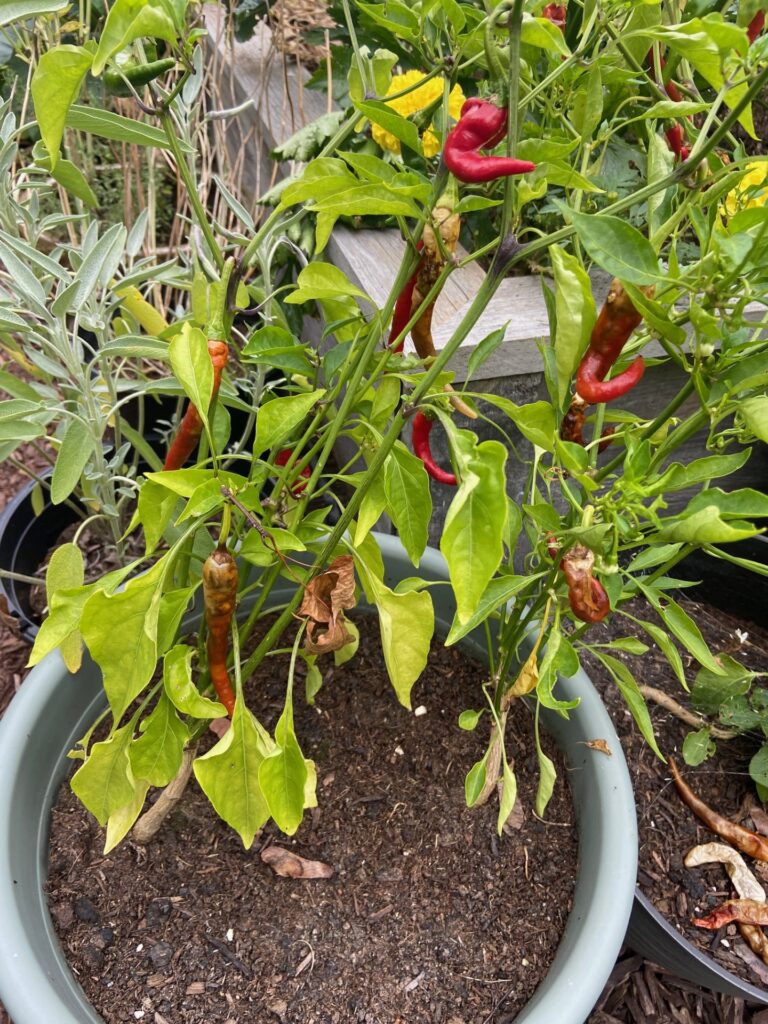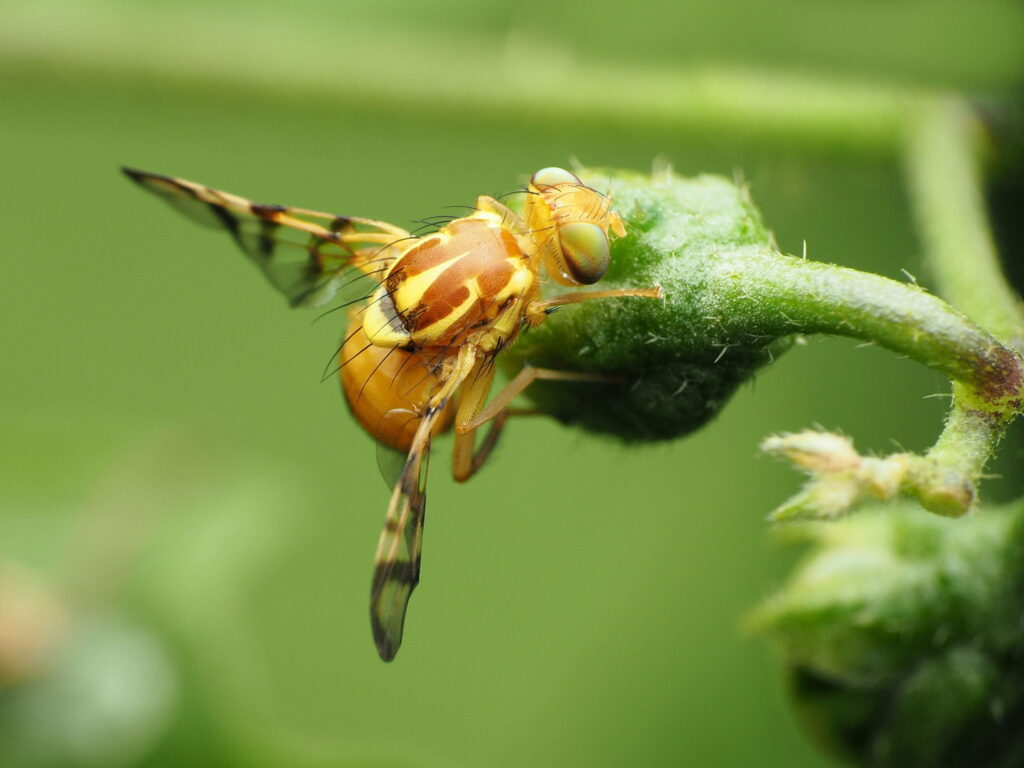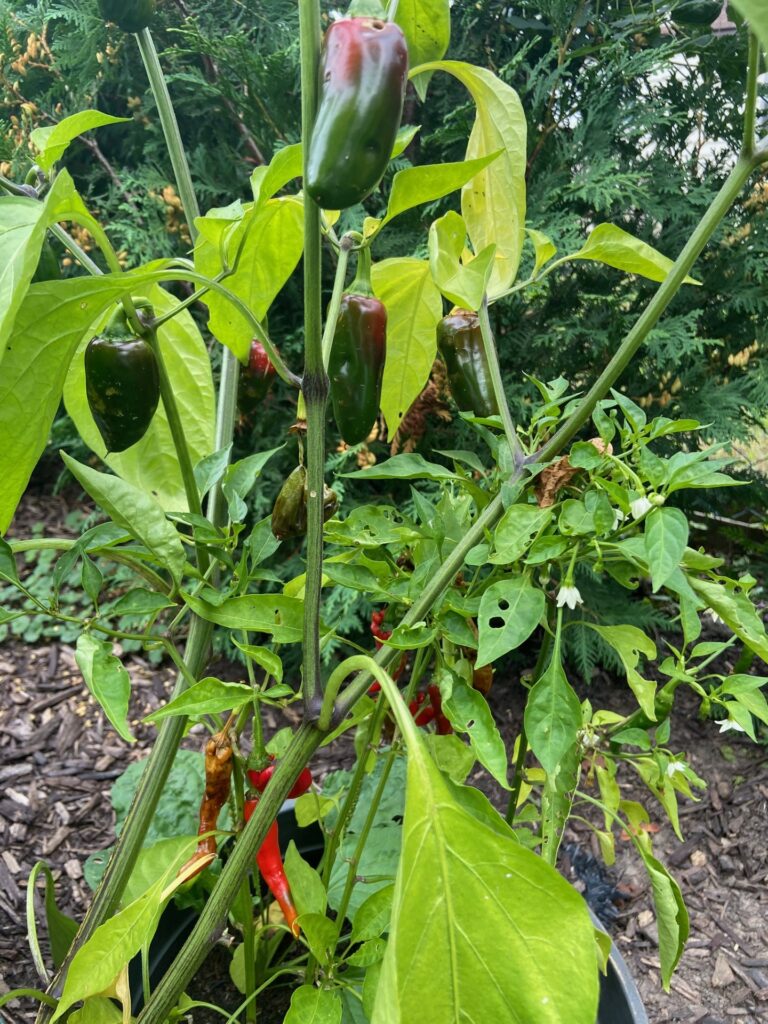Our Pepper Dilemma
Yes, we have challenges with our pepper plants!
Frustration is setting in, and we want you to know you’re not alone in this gardening challenge. In recent seasons, we’ve taken the initiative to start our hot pepper plants (jalapeno, habanero, red chilis, etc.) indoors, anticipating a smooth transition to the garden. Initially, everything appears promising – healthy seedlings growing to a decent size and even producing flowers. However, the truth reveals itself a few weeks later.
What we’re witnessing are telltale signs: small holes pockmarking our peppers, their skin appearing thin and partially devoured, and an unsettling array of colors. Our jalapenos, in particular, bear strange white specks, a far cry from the norm when compared to others. Once these symptoms emerge, it’s evident that we’re grappling with a persistent problem, one that refuses to fade away.
The culprits in question? These pesky little yellow flies, roughly the size of mosquitoes, wreaking havoc on our pepper plants. They’re not selective either, as even our sweet pepper plants fall victim to their relentless attacks. The name of this culprit is a Pepper Maggot.

What is happening to our pepper plants?!
We’ve consulted with experienced growers, and they’ve shared that these troublesome flies have a knack for laying larvae not only in the peppers but also in the soil. Despite our efforts to avoid using the same soil from the previous year, especially for peppers, the problem persists.
To compound matters, some peppers look perfectly fine until you slice them open on the cutting board, revealing a maze of rot inside and, to our dismay, maggots – a rather unpleasant discovery! It’s disheartening to note that this issue seems to afflict various pepper varieties indiscriminately.
What’s even more vexing is that, despite our best efforts to maintain a healthy kitchen garden, these flies can still find their way in, possibly brought in from neighboring gardens. It’s a frustrating aspect of gardening that we have to contend with.
To address this concern, we’re planning to implement a covered solution next year, utilizing mesh that permits the passage of wind and sunlight while keeping the flies out. This dedicated space will serve as our pepper-growing haven, and we’ll be sharing our concept for this protective setup on our social media channels, so stay tuned for updates!

5 Key Takeaways
Pest Prevention: Vigilant pest prevention is crucial in pepper cultivation. The presence of small, yellow flies can lead to infestations, so regularly inspect your plants for any signs of these pests.
Soil Management: Proper soil management is essential. Avoid reusing soil from previous years to reduce the risk of recurring infestations. Consider amending your soil with organic matter to promote a healthy growing environment.
Early Detection: Early detection is key to mitigating issues. Regularly check your pepper plants for any unusual symptoms, such as holes in the peppers, thin or discolored skin, or visible pests.
Mesh Coverings: Consider using mesh coverings for your pepper plants to protect them from flies and other potential pests. These coverings should allow sunlight and air circulation while acting as a barrier against unwanted insects.
Community Impact: Understand that pest issues can sometimes be community-wide problems. Even if you take all necessary precautions, neighboring gardens with similar issues can still pose a threat. Collaboration and shared pest management strategies within the gardening community can be beneficial.
By implementing these takeaways, you can better protect your pepper plants and enjoy a healthier harvest.

What’s next?
We’re confident that this week’s newsletter has enriched your understanding and ignited your passion for your kitchen garden ventures. However, our shared exploration doesn’t end here.
Stay connected with us on social media, where a wealth of gardening insights, exclusive behind-the-scenes peeks, and real-time updates await. Engaging with our vibrant community and learning from your unique gardening journeys brings us immense joy. Join the dialogue and become a valued member of our growing family of plant enthusiasts on Instagram, Facebook, TikTok, and YouTube.
Feeling inspired and envisioning your own kitchen garden project? We’re thrilled to connect with you. Our team stands ready to provide guidance, share our expertise, and collaborate to make your garden dreams a reality. Be it a design consultation, construction services, or a tailored plan, we’re excited to join you on this rewarding journey.
Reach out without hesitation to kick-start the conversation. Share your aspirations, ask questions, and let us help you transform your vision into a flourishing reality. We’re honored to play a role in your kitchen garden success story!
We are here to help you achieve your gardening goals! Reach out with any questions that might come up throughout your journey.
We are excited to announce that there are some new DIY plans on our Etsy store. Whether you need some more storage in the garden, are looking to spruce up your curb appeal or are looking for a new way to grow your tomatoes, we have something for you!
Check it out here – https://www.etsy.com/ca/shop/WillowLaneGardenCo
Best regards,
Tessa & Kyle
Willow Lane Garden Co.
P.S. Tag us in your garden photos and stories on social media. We’d love to see your green thumb in action!

